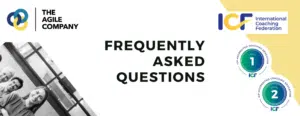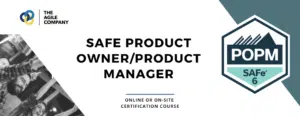As an Agile coach, one of the most rewarding yet challenging aspects of my work is fostering a culture of open, honest communication within teams. In theory, candid feedback should be the cornerstone of any successful Agile environment. But in practice, I’ve often found that this ideal clashes with the realities of diverse teams. The insights from Erin Meyer’s work shed light on the nuanced challenges of delivering feedback in an increasingly diverse workplace, and it resonates deeply with my experiences in coaching.
In my early days as a coach, I vividly remember a situation where I encouraged a team member to provide more direct feedback to a peer. The intention was good—to help the team grow through honest communication—but the outcome was far from what I expected. The feedback was perceived as harsh, leading to a strained relationship rather than a constructive dialogue. This experience made me realize that while the principle of radical candor is powerful, its application can be fraught with challenges, especially in a diverse team setting.
The Rise of Radical Candor and the Challenges of Diversity
Erin Meyer discusses how prominent leaders like Kim Scott, Ray Dalio, and Reed Hastings have championed the benefits of a work environment where candid feedback is the norm. Scott’s concept of “radical candor,” Dalio’s “radical transparency,” and Hastings’ advocacy for straightforward communication at Netflix have all shaped the narrative that honest feedback is essential for innovation and performance. The underlying premise, as Meyer highlights, is that feedback, when delivered correctly, can significantly enhance individual and organizational growth.
However, as Meyer points out, the rise of diversity, equity, and inclusion (DEI) initiatives has added a layer of complexity to this narrative. While DEI and radical candor might seem compatible at first glance—after all, a more diverse team should theoretically benefit from a broader range of perspectives—the reality is more complicated. Diverse teams often come with varying cultural, gender, and generational perspectives on feedback, which can lead to misunderstandings, defensiveness, and even conflict.
The Brain's Alarm System: Why Feedback is Difficult
One of the key insights from Erin Meyer’s article is how the brain reacts to feedback. The conflict between the brain’s frontal cortex, which logically understands the value of feedback, and the amygdala, which triggers a fight-or-flight response when faced with criticism, is a universal challenge. We are not always aware of how we would react as well. We may say we feel comfortable giving or receiving feedback, but in reality, we mostly shy away from it, as from an evolutionary perspective, we may create an imbalance in our social structures
For example, in an experiment with over 3,000 executives, the majority initially claimed they would give candid feedback in a hypothetical scenario. However, when reflecting on their actual behavior, many admitted they rarely provide such feedback in real-life situations. This discrepancy highlights the difficulty of overcoming the amygdala’s alarm system, particularly in a diverse team where trust and psychological safety may not be fully established.
“The challenge with feedback is that it triggers a conflict in people’s brains between the frontal cortex and the amygdala. The cortex, the most logical part of the brain, loves candid feedback. But the brain’s most primitive part, the amygdala, doesn’t. If you tell me I’ve acted ineffectively, it may trigger an alarm in my amygdala: ‘Danger! I might get kicked out of my tribe!’ The stress hormones cortisol and adrenaline flood my bloodstream, throwing my body into ‘fight or flight’ mode. The fight reaction leads me to respond defensively: ‘I’m not the problem. You are!’ The flight reaction may result in a comment like ‘Thanks so much for that feedback. That is very helpful,’ after which I try to never speak to you again. The challenge with feedback, therefore, is to make sure that your delivery succeeds in helping the cortex override the amygdala.”
Erin Meyer – For HBR Magazine
Navigating Cultural Differences in Feedback
Erin Meyer provides compelling examples of how cultural differences can complicate the delivery and reception of feedback. In cultures like Ukraine, feedback is often direct and unambiguous. For instance, Meyer shares the story of a Ukrainian executive named Olga who learned the hard way that her straightforward approach, which worked well in her home country, was perceived as overly harsh when she moved to the United States. Her American colleagues were more accustomed to feedback that wrapped negatives in positives—a practice that can confuse or frustrate those from more direct cultures.
Similarly, an American named Jethro, discussed by Meyer, found that his culturally typical feedback style was seen as aggressive by his Thai colleagues. Meyer explains that in some cultures, implicit communication is the norm, and feedback is often delivered in a way that avoids direct criticism. This can include praising the good while leaving the bad unspoken, trusting that the recipient will infer the negative from what was omitted.
These examples underscore the importance of cultural awareness in feedback. What works in one culture can backfire in another, leading to misunderstandings and damaged relationships. As an Agile coach, I’ve seen firsthand how cultural differences can create friction in teams. This awareness is crucial when helping teams navigate the complexities of feedback in a multicultural environment.
Gender Dynamics: The Power Imbalance in Feedback
Gender also plays a significant role in how feedback is given and received. Erin Meyer highlights how women in leadership positions often face a double bind: they are expected to be both warm and competent. This can make it difficult for women to deliver candid feedback without being perceived as aggressive. On the other hand, men who provide unsolicited feedback to women may unintentionally come across as patronizing or condescending, a phenomenon sometimes referred to as “mansplaining” or “manvising.”
Meyer shares the story of Cassandra, a software industry marketing VP, which illustrates this dynamic. When a male colleague offered her feedback after a successful presentation, it undermined her confidence rather than bolstering it. Although his feedback was actionable, the timing and delivery made Cassandra feel belittled. This example highlights how even well-intentioned feedback can have unintended consequences, particularly in cross-gender interactions.
Meyer introduces the “three A’s of feedback” as a strategy to navigate these gender dynamics: feedback should be intended to assist, actionable, and the provider should ask for feedback before giving it. This approach can help balance the power dynamics inherent in cross-gender feedback and ensure that the recipient feels respected and empowered.
Generational Differences: Aligning Feedback Expectations
Generational diversity adds yet another layer of complexity to the feedback process. Erin Meyer outlines how different generations—Baby Boomers, Gen Xers, Millennials, and Zoomers—have distinct expectations and preferences when it comes to feedback. Baby Boomers, for example, are accustomed to formal, annual performance reviews, while Millennials and Zoomers expect real-time, continuous feedback.
This generational divide can lead to misunderstandings and frustrations within teams. Meyer shares the experience of Richard, a Baby Boomer, who felt uncomfortable receiving feedback from a much younger colleague, Connor. Despite his initial resistance, Richard later realized that Connor’s feedback was valuable because it offered a fresh perspective that his peers could not provide.
To bridge these generational gaps, Meyer suggests creating explicit team norms around feedback. By establishing clear expectations and practices, teams can create a shared understanding of how feedback should be given and received, regardless of generational differences. This approach not only fosters a more cohesive team environment but also ensures that feedback is perceived as a positive, constructive process.
Applying These Insights in Agile Coaching
Reflecting on these insights from Erin Meyer, I’ve come to realize how essential it is to tailor feedback strategies to the unique needs of each team. As an Agile coach, I work with teams from various cultural, gender, and generational backgrounds. Understanding these dynamics allows me to guide teams in creating feedback practices that align with their diverse perspectives and experiences.
Here’s how I think this may be a great idea to apply these insights with my clients:
-
Cultural Sensitivity Training: It may be a great idea to incorporate cultural sensitivity training into my coaching sessions, helping teams understand how cultural differences can impact communication and feedback. This training could include practical exercises where team members can practice giving and receiving feedback in culturally appropriate ways.
-
Gender-Aware Feedback Practices: I am looking forward to introducing the “three A’s of feedback” from Erin Meyer to help teams navigate gender dynamics. By encouraging team members to ask for feedback before providing it, and ensuring that feedback is actionable and intended to assist, we could create a more equitable and respectful feedback culture.
-
Generational Alignment Workshops: It might be beneficial to facilitate workshops that bring together team members from different generations to discuss their expectations around feedback. These workshops could focus on creating explicit team norms that accommodate the diverse preferences of each generation, ensuring that feedback is seen as a constructive, not divisive, process.
-
Regular Feedback Loops: Agile teams already have several of these in their agenda, and without adding another meeting to their list, I am going to experiment making this a core team activity throughout the daily work and business… This practice could help normalize feedback as a continuous, two-way process, reducing the likelihood of misunderstandings and fostering a culture of mutual respect and improvement.
The Art of Balancing Candor and Diversity
Fostering a culture of radical candor in a diverse workplace is undoubtedly challenging, but it is also immensely rewarding. As Erin Meyer illustrates, the key to success lies in understanding the complex dynamics that influence how feedback is given and received. By being aware of cultural, gender, and generational differences, and by applying strategies tailored to these nuances, we can create environments where honest, constructive feedback thrives.
As an Agile coach, my goal is to help teams navigate these complexities with empathy and understanding. By doing so, we not only improve individual and team performance but also build stronger, more inclusive workplaces where everyone has the opportunity to grow and succeed.
















































